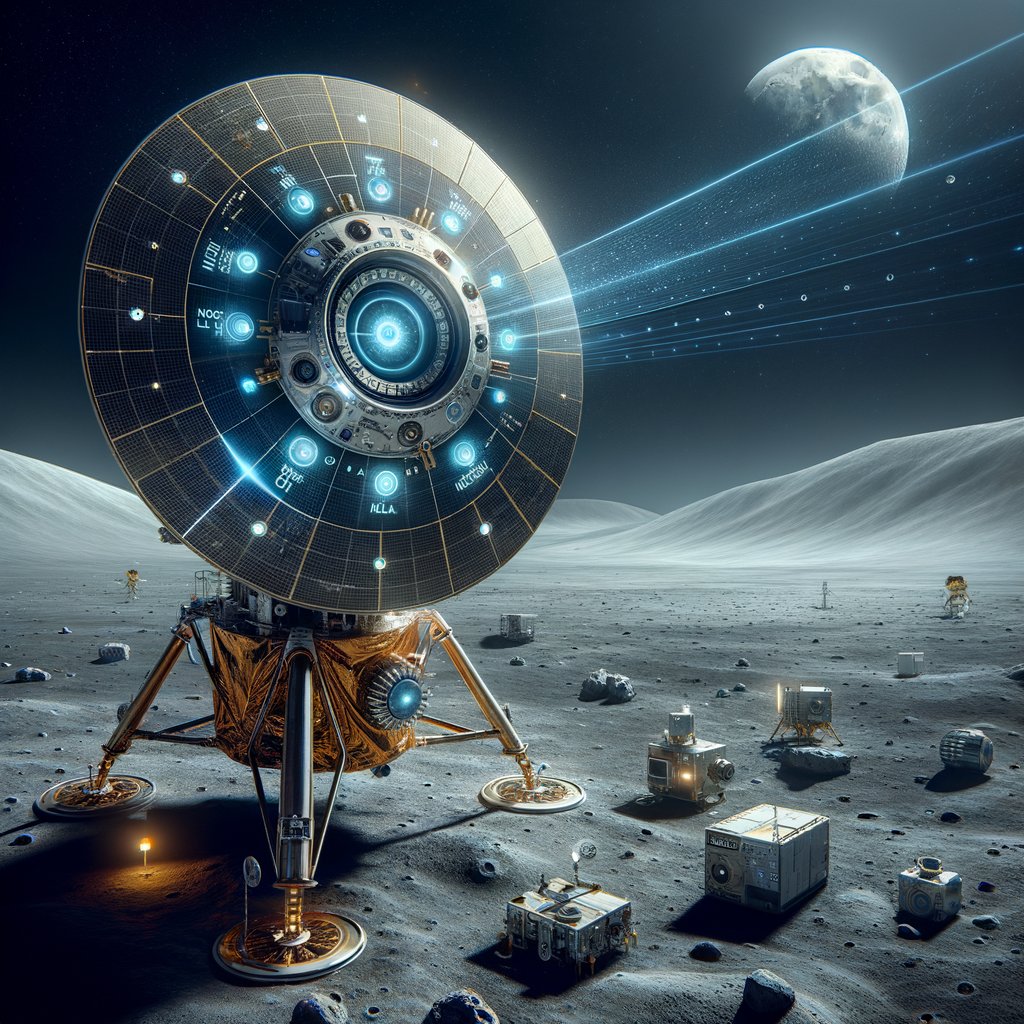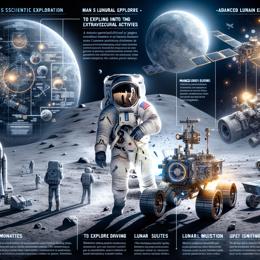Image created by AI
NASA's New Lunar Endeavor: Advancing Moon Research with Cutting-edge Retroreflectors
NASA's profound legacy in lunar exploration is poised for a groundbreaking augmentation as it introduces the Next Generation Lunar Retroreflector (NGLR).
This innovation harks back to the Apollo missions, where first-generation retroreflectors were deployed to form the basis of lunar laser ranging—a technique pivotal in detailing the Moon’s dimensions and its distance from Earth. These retroreflectors, essentially sophisticated mirrors positioned on the lunar surface, facilitated the calculation of Earth’s gravitational influences by measuring the time it took for laser beams, sent from Earth, to return after bouncing off these devices.
Encompassed within NASA's forward-looking Artemis program, the NGLR not only aims to transcend its predecessors in precision but also expand the breadth of lunar science. NGLR-1, the first of this new series, crafted by the astute minds at the University of Maryland, is committed to offering measurements with sub-millimeter accuracy. This is expected to furnish a more intricate understanding of the lunar interior and could potentially uncover nuances about shifts in the Moon's liquid core and resultant seismic activities.
Artemis missions, punctuated by the impending deployment of payloads including NGLR-1 via Firefly Aerospace’s Blue Ghost 1 lander, symbolize a pivotal era. Dennis Harris from NASA’s Marshall Space Flight Center underscores, “NGLR-1 promises findings an order of magnitude more accurate than those of the Apollo era”. This isn't merely a technological leap but a stride towards expanding our understanding of cosmology, astrophysics, and lunar physics more broadly.
The deployment strategy is layered; following NGLR-1, two more retroreflectors are slated for delivery. One, the Artemis Lunar Laser Retroreflector (ALLR), might find its place near the lunar south pole if selected for Artemis III. Another, bound for a non-polar region, is also anticipated as part of future Commercial Lunar Payload Services (CLPS) missions.
Through CLPS, NASA not only catalyzes its lunar exploratory ambitions but also bolsters commercial participation and innovation in lunar expeditions. As a primary customer for these commercial lunar delivery services, NASA nurtures a symbiotic relationship fostering industry expansion while marching towards extensive lunar exploration.
The establishment of these retroreflectors inevitably promulgates vast scientific opportunities and is a testament to a sophisticated evolution from an era initiated by the Apollo missions. These developments embody us stepping into a realm of unprecedented lunar enlightenment, ready to peel back layers of our lone satellite, with meticulousness that only modern science can accomplish.










